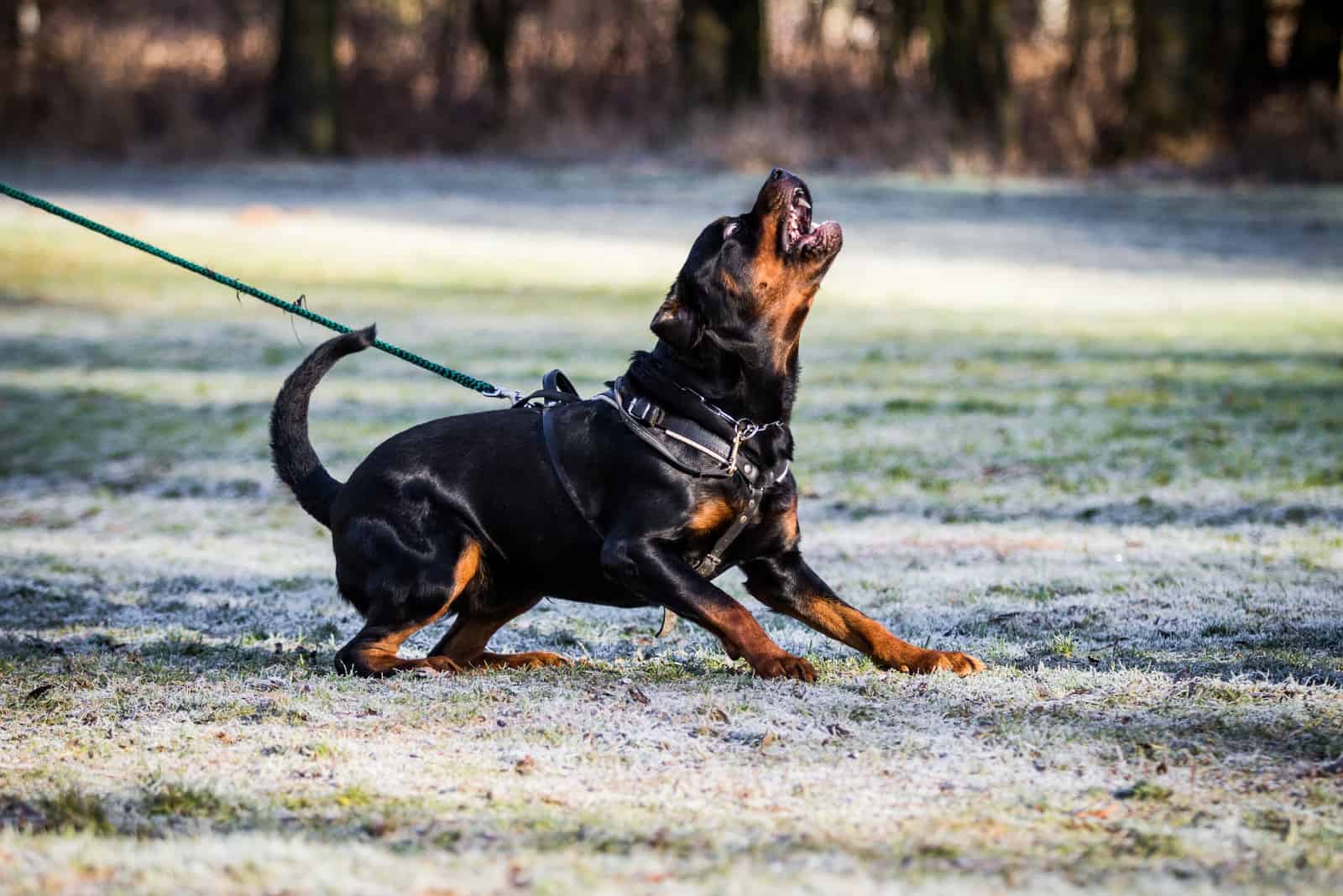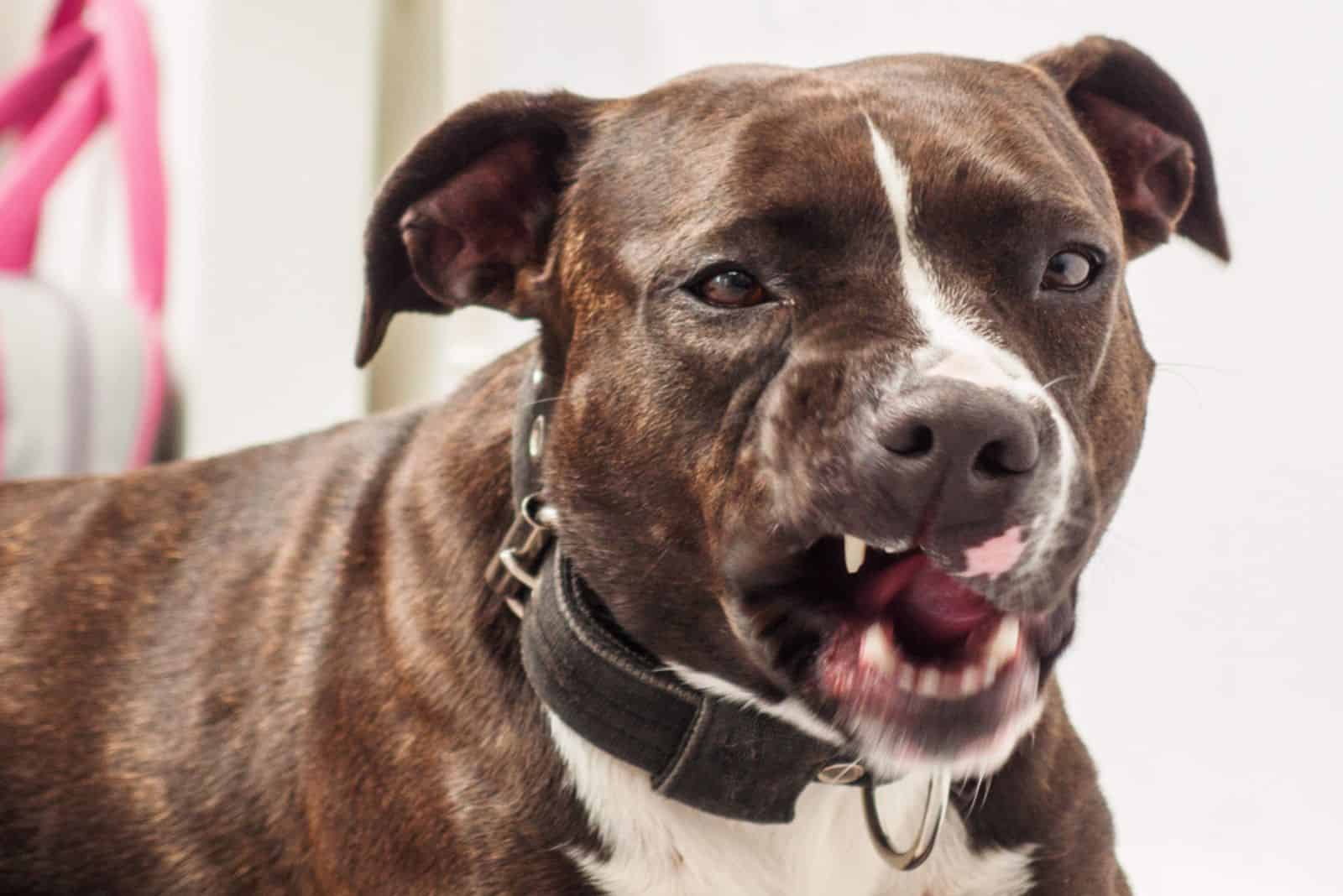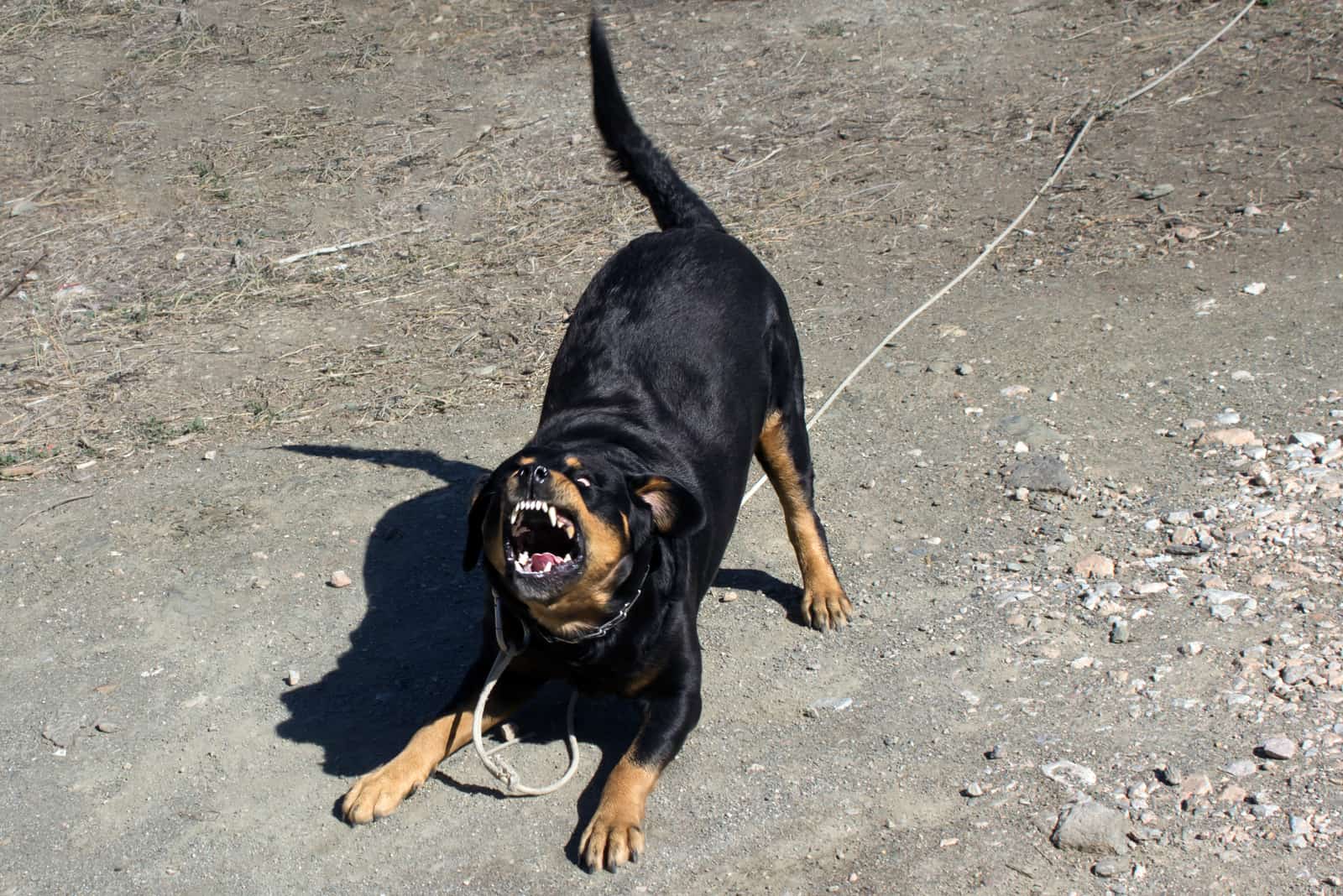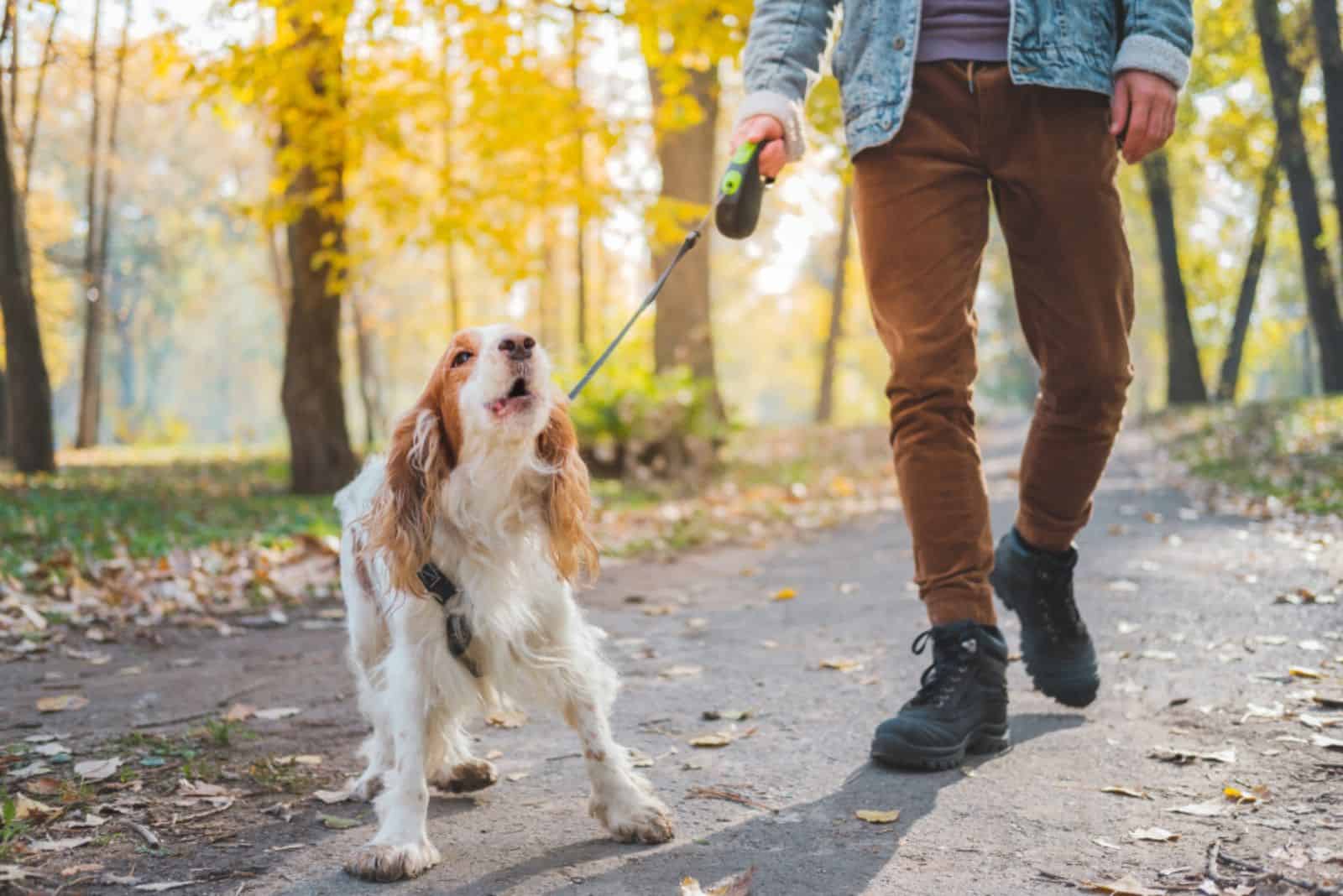A lot of dogs get blamed for their aggressive behavior, but they’re not always to blame for it as there is such a thing called fear aggression in dogs and I’m here to help you understand the difference between it and regular aggression.
Fear aggression in dogs is often an instinctual response where the dog wants to defend itself and run away due to being found in unwanted circumstances, or a defense mechanism that he has developed over a long period of abuse and neglect.
Frankly, it’s no different to a human who gets treated the same way and responds rather violently to any interaction, be it well meaning or not, just to prevent themselves from getting hurt again.
Though, dogs go through a lot more scrutiny over it, particularly breeds who are already branded due to their predisposition for developing aggressive behavior like Pit Bulls, Dobermans, GSDs and the like.
That said, fear aggression isn’t always cultivated in a bad environment, but certain interactions that people do can scare and confuse the dog in question, leading to the behavior manifesting briefly.
If you want to find out what the potential triggers for it are and what can be done in order to mitigate or stop the behavior altogether, then be sure to read on.
The 7 Most Common Triggers Of Fear Aggression In Dogs
1. Mistreatment

The first, and most obvious trigger for fear aggression in dogs is related to a dog’s mistreatment.
Some people may do it unintentionally every now and then or be completely unaware that what they’re doing is hurting their pup, but one needs to be more mindful of their dog’s reaction.
Then there are some absolutely vile people out there who do this intentionally, getting a dog just to mistreat him for a particular end, regardless of what happens to them.
These dogs are often rescued or left out on the street, afraid and with fear aggression taking deep roots within their mental state.
These are the dogs that will appear violent, lash out and try to bite you if you try getting close, afraid of being mistreated once again and will attempt to run away.
For these dogs, it takes a long while to get over this behavior, but it is possible.
As always, all that’s needed is a lot of love and a way to instill discipline without triggering any previous trauma and causing it to resurface.
2. Small, Confined Spaces
Another potential trigger for fear aggression, albeit short-lived, is approaching a dog who’s in a closed space, places like dog houses, crates, small cubbies and the like.
Whether he was hiding there out of general fear or anxiety, or if he was resting, the chance is that you’re disturbing him, but also you being at the only available exit may make him panic, leading to an attempt to back away only to lunge when he realizes he has nowhere to go.
It triggers that fight or flight response in him for that moment and he may end up biting you without thinking.
Now, it won’t always happen when you do it, but it’s better to be safe than sorry and not do it in general and instead call for him to come out from a bit of distance, letting him do it on his own.
3. Sudden And Erratic Movements From Others

Another problem that can cause this fear aggression is having people act erratically and unpredictably around them, confusing the dog to the point where he may think of it as an attack and move to bite back.
This is most common with people outside who are either cycling, skateboarding, or running. Cycling even adds the added detriment of noise and size to the whole threat, making them more likely to get attacked.
4. Loud Noises
Not all targets of fear aggression are living beings, sometimes, even appliances and cars can get under attack due to the loud noises that they create.
The most notorious one is the vacuum cleaner whose noise will make almost any dog go crazy, and the dreaded fireworks.
That said, the rule of loud noise applies to humans too, particularly ones who are making unnecessary noise.
5. “Masked” Individuals

While not masks in particular, it’s often the people who mask their actual appearance that trigger the specific form of aggression in dogs.
People wearing things like thick scarves, glasses, hats or coats and winter jackets in particular can elicit that angry response, doubly so if they act in an unusual way.
A warning to any of you street performers out there, just in case.
6. Invasion Of Personal Space
Somewhat tying into #2, this one in particular relates to strangers getting too close to the dog without his approval, thinking that they know better.
Actions that trigger this in particular are ones that have people going over the dog’s head to pet them or out of his sight before he even sniffs their hand to get a read on them, causing a rise in panic levels for the canine and a potentially violent retaliation.
Make sure to tell others how to approach your pooch, and if they don’t listen, don’t let them. It’s for their own good, and for the sake of your dog’s mental health.
7. Past Traumatic Experience

Finally, some areas that are tied to some of the dog’s traumas of the past (much like the first reason), may trigger some aggression in a dog when they realize they’re being led there.
One in particular would be a vet’s office, especially if you had them spayed or neutered in the past or they’ve gone through a painful surgery.
Other places could be spots where they’ve suffered an injury or, for some dogs, even a groomer’s salon.
Do All Dogs Suffer From Some Form Of Fear Aggression?
Not really, though they may experience it sometime in their life, but even that’s not guaranteed as long as they’re raised in a safe environment where they get lots of love and care.
Also, do keep in mind that not all aggression is fear aggression. Some dogs may simply be naturally aggressive due to genetics or some other factors, and that love won’t solve every problem.
If your dog is struggling with dealing with aggressive behavior, take him to a pet behavior expert or a vet to hopefully find out what the root cause may be and if it can be fixed or not.
They’ll also instruct you on how you need to handle the issue and what you need to do in order to root it out.
What Are Some Things That You Should And Shouldn’t Do To A Dog Who’s Dealing With Fear Aggression?

Well, the obvious one is to not mistreat him physically or do any of the above mentioned triggers in the first place.
Another would be to not dole out the regular dose of punishment if he does something wrong, but to run with the idea of positive reinforcement. The only time you need to put your foot down is if he tries to attack you or someone else.
Naturally, don’t try convincing him that the state of fear aggression should be his norm, but nurture his growth and rehabilitation.
Make sure he gets some proper socialization this time and renew his behavioral training if need be, depending on where the problem lies in the first place.
Create a comfortable environment for him. It doesn’t have to be the entire household, but one corner of his own that he can recognize as his safe haven, a place where he can weather the storm and calm himself is going to be of great help.
Teaching him some basic tricks can work wonders too as well as any other form of communication that you two can establish between yourselves.
This way, there will be less misunderstandings and a stronger bond of trust between the two of you which is a key part in resolving the problem in the first place.
Finally, as mentioned before, you should find out what triggers this aggression in the first place and eliminate as many possible triggers from your dog’s environment as you can.
That’s arguably the best way you can stave fear aggression in dogs off, or at least the most effective one.
In Conclusion
Fear aggression in dogs isn’t an uncommon thing. It can manifest itself as a short or long term problem and has a variety of triggers from environmental, to more abstract ones like personal preferences.
Naturally, genetic predisposition toward aggression makes this behavior more likely too and is something to keep in mind when approaching a particular dog breed that’s known to behave as such.
Thankfully, there are ways to remedy said behavior and it all starts with a visit to the vet or a pet behavior specialist, both of which can greatly help in identifying the cause of the aggression and help show you the relevant steps in helping remedy the situation.
It’s by no means an easy road to follow, but it’s one that’ll greatly reward both you and your canine companion with more mental stability and a stronger bond.
All it takes is being patient with your pooch, making the environment safe for him and helping to re-socialize him if need be.
I know it sounds tough, but I have full trust that you’ll be able to manage it for the sake of your furry best friend. Until next time, pet parents.
RELATED LINKS:
- Should I Get Rid Of My Fear-Aggressive Dog? Read This First
- 5 German Shepherd Signs Of Aggression You Should Recognize
- 3 Rottweiler Aggression Signs And 4 Common Causes
- Are Border Collies Aggressive? How To Stop Their Aggression?
- Are Shiba Inus Aggressive? Dealing With Dog Aggression
- Where To Surrender An Aggressive Dog? 6 Safe Solutions
- How To Socialize An Aggressive Dog: Guide For All Dog Owners
